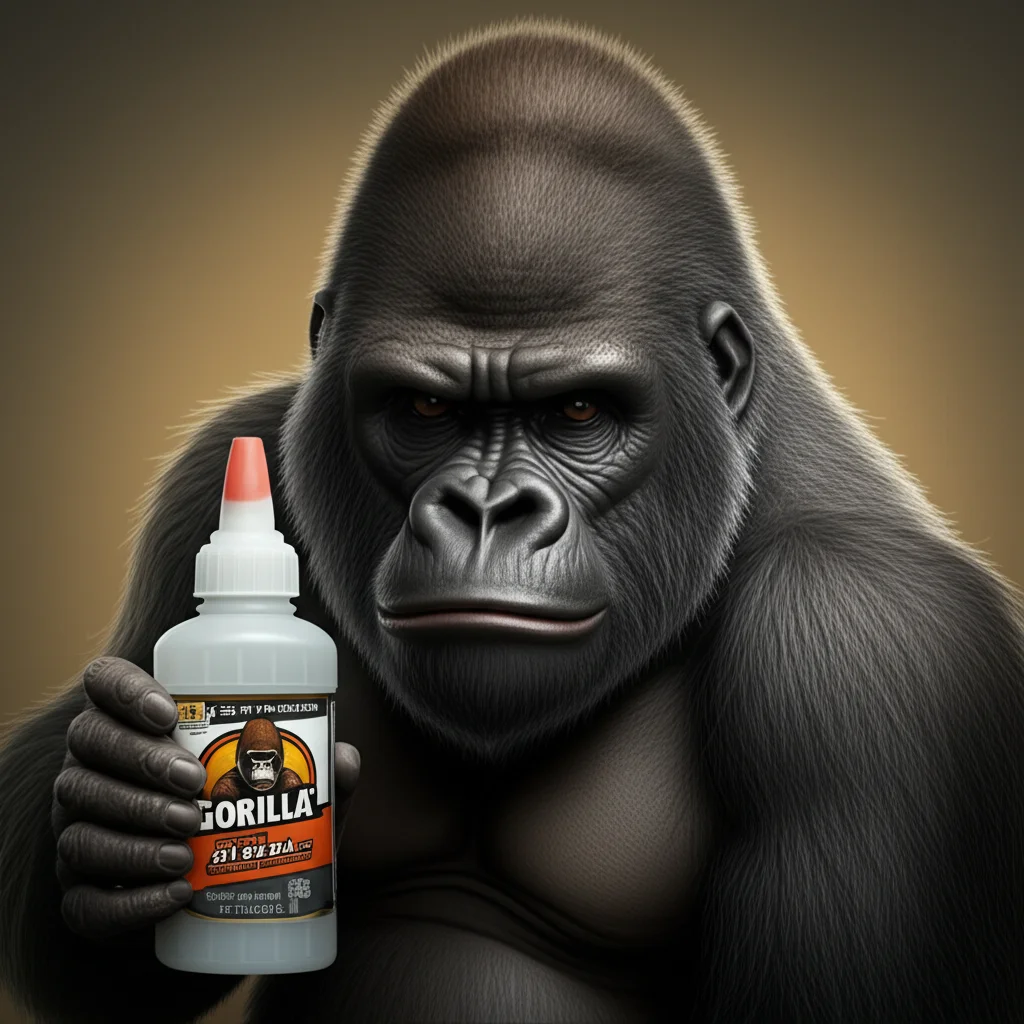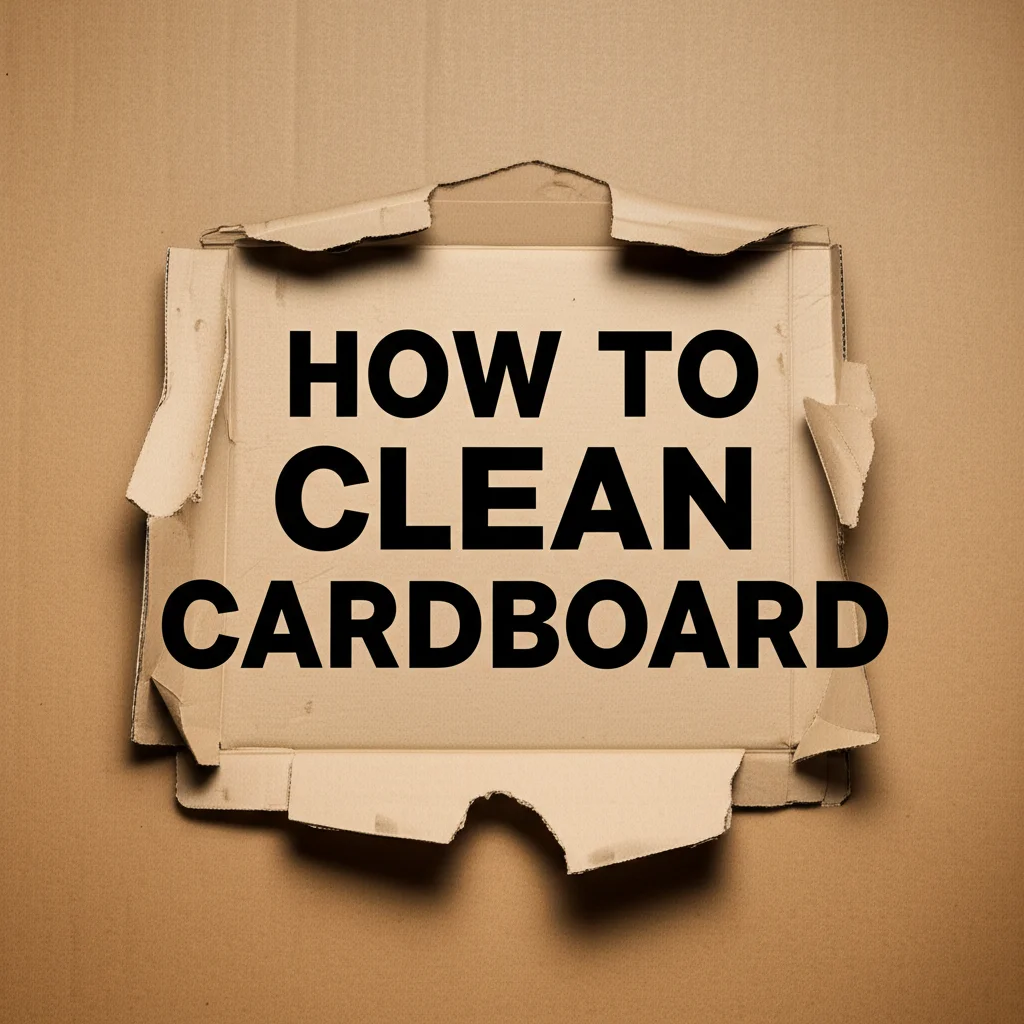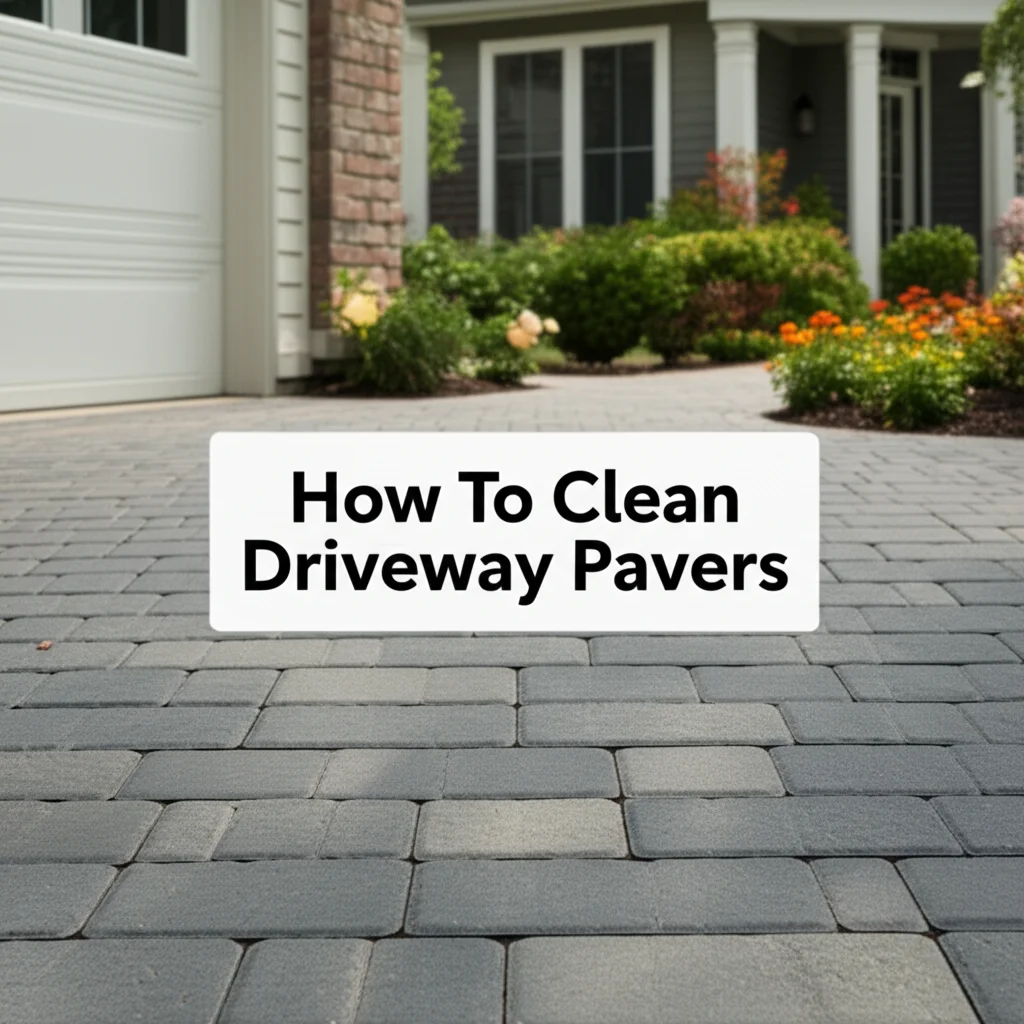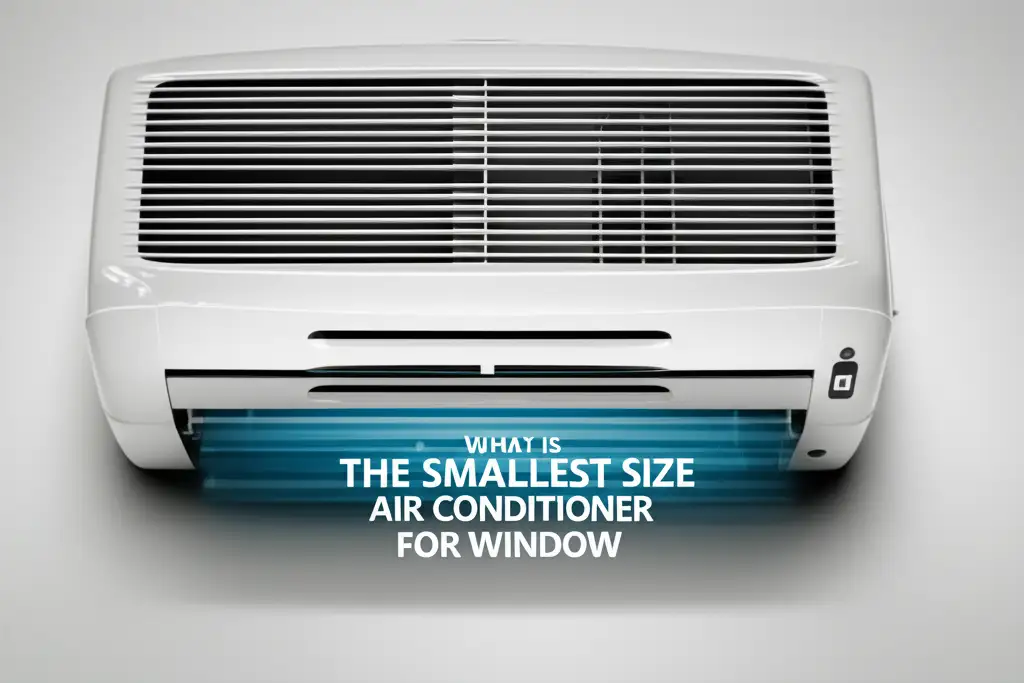· Todd Martin · Home Maintenance · 22 min read
How To Clean Gorilla Glue

Conquering Gorilla Glue: Effective Cleaning Strategies
Have you ever found yourself in a sticky situation? I certainly have. That moment when a drop of super-strong adhesive like Gorilla Glue lands where it shouldn’t feels truly frustrating. Gorilla Glue is incredibly strong and durable, perfect for many projects. However, its powerful bond becomes a problem when it spills. Knowing how to clean Gorilla Glue properly is essential. This article will guide you through effective methods to remove this stubborn adhesive from various surfaces. We will cover techniques for skin, glass, plastic, wood, and even fabric. You will learn the right tools and steps for successful glue removal.
Takeaway
Removing Gorilla Glue requires patience and specific techniques. Here are the key actionable messages:
- Act quickly on fresh spills to prevent hardening.
- Use appropriate solvents like acetone or mineral spirits.
- Always test solvents on an inconspicuous area first.
- Prioritize safety by wearing gloves and eye protection.
- Know that methods vary greatly depending on the surface type.
How to Clean Gorilla Glue
To clean Gorilla Glue, act fast for fresh spills by wiping immediately. For dried glue, use acetone (nail polish remover) for non-porous surfaces like glass or plastic, rubbing gently. For skin, warm soapy water and oils can help. Always test solvents on hidden areas first.
Understanding Gorilla Glue: Why It’s So Tough to Clean
Gorilla Glue is a brand known for its incredibly strong, waterproof polyurethane adhesives. These glues expand slightly as they cure, creating a powerful bond. This unique chemical makeup makes them ideal for heavy-duty repairs. However, it also makes them incredibly challenging to remove once dry. The glue forms a rigid, almost plastic-like bond, adhering fiercely to nearly any material it touches.
I have found that understanding this toughness helps in tackling spills. Many common cleaning agents do not affect it. Water, for instance, only contributes to its curing process. You need specific solvents or mechanical abrasion to break its bond. This characteristic distinguishes it from many other household glues. Its resistance to moisture and temperature changes is impressive.
The Science Behind Its Stickiness
Gorilla Glue contains polyurethane prepolymers. These react with moisture in the air or on the surface. This reaction causes the glue to foam slightly and cure. The curing process forms a strong, cross-linked polymer structure. This structure creates an incredibly durable, waterproof bond. This expansion helps the glue fill gaps, enhancing its grip.
Once cured, the glue becomes very hard. It resists many common solvents. The strong bond means it will not simply dissolve away. You need something that breaks down this specific polymer chain. This is why standard soap and water are ineffective. The chemistry makes it a formidable opponent.
Fresh vs. Cured Gorilla Glue
The state of the Gorilla Glue spill significantly impacts its removal. Fresh Gorilla Glue is still liquid or tacky. You can usually wipe it away with a damp cloth if you act immediately. The key is speed; the curing process begins very quickly. If you wait, even a few minutes, it starts to harden.
Cured Gorilla Glue, on the other hand, is a solid, stubborn blob. It has fully reacted and formed its strong bond. Removing cured glue often requires a solvent that can dissolve the hardened polyurethane. Sometimes, gentle scraping is necessary. I always tell people that prevention is easier than removal.
Essential Supplies for Gorilla Glue Removal
Cleaning Gorilla Glue effectively requires having the right tools and supplies on hand. Before you begin any removal process, gather everything you might need. This proactive approach saves time and reduces frustration. Your arsenal should include basic safety gear and various solvents. I always make sure I have these items nearby when working with powerful adhesives.
The specific supplies you need will depend on the surface. Different materials react differently to various cleaning agents. For example, some solvents safe for glass might damage plastic. Always read product labels and understand their compatibility. Being prepared makes the job much smoother.
Safety First: Protecting Yourself
Safety is paramount when dealing with strong adhesives and chemical solvents. Gorilla Glue can irritate skin and eyes. Solvents like acetone can be harsh and flammable. Always wear chemical-resistant gloves to protect your hands. I prefer nitrile gloves because they offer good protection. Eye protection, such as safety glasses, is also crucial. Vapors from some solvents can be strong. Ensure you work in a well-ventilated area. Open windows or use a fan. If working indoors, consider a respirator if ventilation is poor. Avoid direct contact with skin and eyes.
Common Household Solvents
Several common household items can act as solvents for Gorilla Glue. Acetone is often the most effective. It is the primary ingredient in most nail polish removers. Make sure your nail polish remover contains 100% acetone for the best results. Rubbing alcohol (isopropyl alcohol) can also help, especially with fresh spills or on less sensitive surfaces. Mineral spirits or paint thinner are other options for tougher, dried glue, particularly on non-porous surfaces. These solvents work by breaking down the chemical bonds of the glue. Always test these on a hidden spot first to prevent damage.
Specialized Glue Removers
Sometimes, household solvents are not strong enough. In such cases, specialized glue removers are available. These products are formulated to dissolve strong adhesives like Gorilla Glue. Brands like Goo Gone or specific adhesive removers can be very effective. I have found these particularly useful for large spills or very stubborn, cured glue. Read the instructions carefully for any specialized product. They often contain stronger chemicals. Always check for surface compatibility before application. These removers are designed for tough jobs and can save you a lot of effort.
How to Remove Gorilla Glue from Skin Safely
Getting Gorilla Glue on your skin is a common accident. It feels unpleasant and creates a tough, sticky patch. Your first reaction might be to panic, but stay calm. My experience shows that gentle, persistent effort works best here. The goal is to loosen the glue’s bond without damaging your skin. Remember, your skin is delicate, so harsh scrubbing is not advisable. Always prioritize safety and skin integrity.
I recommend having a plan ready before you even start using Gorilla Glue. If you know how to react, you can minimize the glue’s effect. This section provides immediate steps and solutions for both fresh and dried glue on your skin. These methods are designed to be effective yet gentle.
Immediate Action for Fresh Glue
If Gorilla Glue gets on your skin and it is still wet or tacky, act quickly. Do not wait for it to dry. The faster you respond, the easier it is to remove.
- Wipe Immediately: Use a dry cloth or paper towel to wipe off as much glue as possible. Avoid spreading it.
- Soapy Water and Oil: Wash the area immediately with warm, soapy water. Use a soft brush, like a nail brush, if available, to gently scrub. If this does not work fully, apply a small amount of an oil-based product. This could be olive oil, petroleum jelly, or even hand lotion. Rub the oil into the glue. The oil helps to break down the adhesive’s bond.
- Repeat as Needed: Continue washing and applying oil until the glue lifts. This method is usually effective for fresh spills.
Dealing with Dried Glue on Skin
Dried Gorilla Glue on skin requires a different approach. It has formed a solid bond, so gentle abrasion or dissolving agents are needed.
- Soak in Warm Soapy Water: Submerge the affected skin in warm, soapy water for 10-15 minutes. This softens the glue.
- Apply Acetone: If soaking does not work, carefully apply a small amount of acetone nail polish remover to a cotton ball. Gently dab it onto the dried glue. Do not rub aggressively. Acetone helps dissolve the glue.
- Gentle Peeling/Rubbing: After applying acetone, try to gently peel or rub the softened glue. You can also use a pumice stone or fine-grit sandpaper (very carefully!) to lightly abrade the glue. Be extremely gentle to avoid skin irritation.
- Moisturize: Once the glue is gone, wash your hands thoroughly with soap and water. Apply a good moisturizer to prevent skin dryness, as acetone can be very drying.
For very stubborn patches, repeat the process. Always prioritize skin health. If irritation occurs, stop and consult a doctor.
Cleaning Gorilla Glue from Hard Surfaces
Gorilla Glue often spills onto hard surfaces during projects. These surfaces include glass, plastic, wood, and metal. Each material requires a specific approach to avoid damage while effectively removing the glue. I have learned that testing any cleaning method on an inconspicuous area is critical. This prevents accidental discoloration or etching. The key is to match the solvent to the surface’s durability.
Removing glue from non-porous surfaces like glass or plastic is generally easier than from porous materials like unfinished wood. The glue does not penetrate as deeply. However, some solvents that dissolve the glue can also harm the surface itself. Being careful and knowledgeable makes a big difference.
Removing Glue from Glass Surfaces
Glass is quite durable, making Gorilla Glue removal relatively straightforward. I find that glass tolerates stronger solvents well.
- Scrape Gently (If Dry): For dried glue, start by carefully scraping as much as possible with a razor blade or sharp utility knife. Hold the blade at a shallow angle. This prevents scratching the glass. Take your time with this step.
- Apply Acetone or Rubbing Alcohol: Dampen a cloth or cotton ball with acetone or rubbing alcohol. Place it over the remaining glue. Let it sit for a few minutes to soften the bond. For stubborn spots, consider applying a generous amount and covering it with plastic wrap to prevent evaporation, letting it sit for a longer period.
- Wipe and Clean: After softening, wipe away the glue. You might need to repeat the application and wiping. Finish by cleaning the glass with a standard glass cleaner to remove any residue. For more general glass cleaning, you can also check out tips on how to clean glass with vinegar.
Tackling Gorilla Glue on Plastic
Plastic surfaces are trickier because many solvents, especially acetone, can damage them. Acetone can melt or dull certain plastics. It is vital to identify the type of plastic if possible.
- Test First: Before anything else, apply a tiny amount of your chosen solvent (rubbing alcohol, mineral spirits, or Goo Gone) to an inconspicuous area of the plastic. Wait a few minutes to see if it causes any discoloration or melting.
- Rubbing Alcohol or Mineral Spirits: For fresh or slightly dried glue, rub the area with a cloth dampened with rubbing alcohol. If that doesn’t work, try mineral spirits. Apply gentle pressure. For stubborn glue residue, you might need to let the solvent sit for a minute or two.
- Gentle Scraping (Plastic Safe): For dried glue, use a plastic scraper or an old credit card. Metal scrapers can scratch plastic. Carefully push against the glue to lift it.
- Specialized Cleaners: If all else fails, consider a specialized glue remover for plastic. These are designed to be safer for plastics. Always check the product label for compatibility.
Strategies for Wood and Metal
Wood and metal surfaces have different properties that affect glue removal. Wood can be porous, absorbing the glue, while metal is non-porous and generally more resilient.
Cleaning Gorilla Glue from Wood
Wood presents a challenge because Gorilla Glue can soak into the grain. The approach depends on whether the wood is finished or unfinished.
- Finished Wood: For finished wood (sealed, painted, or varnished), start by trying mineral spirits or rubbing alcohol on a soft cloth. Apply gently and rub the glue. If the glue is very stubborn, a very light application of acetone might be considered, but test it first. Acetone can strip finishes. After applying solvent, immediately wipe the area clean. You want to avoid prolonged exposure.
- Unfinished Wood: Unfinished wood is more absorbent. This makes removal tougher. You might need to gently scrape the bulk of the glue with a plastic scraper. For remaining residue, light sanding with fine-grit sandpaper (120-220 grit) can work. Sand with the wood grain. After sanding, you may need to refinish the area. Always aim to prevent spills on unfinished wood, or protect the area with painter’s tape. For more on general wood care, you can read about how to clean stains on wood.
Removing Gorilla Glue from Metal
Metal surfaces are generally quite forgiving. They can withstand stronger solvents and more aggressive scraping.
- Mechanical Removal: For dried glue on metal, you can often scrape it off with a razor blade or a utility knife. The hard surface of the metal allows for this. Be careful not to scratch the metal if it has a delicate finish.
- Acetone or Mineral Spirits: Apply acetone or mineral spirits to a cloth. Rub the glue vigorously. These solvents usually break down the glue on metal effectively. Let it soak for a few minutes if the glue is thick.
- Wire Brush (for unfinished metal): For unfinished metal or rough surfaces, a wire brush can help remove stubborn bits. Always test this in an inconspicuous area first. This method is too aggressive for polished or painted metals.
- Clean Residue: After removal, wipe the metal clean with a damp cloth. You can then polish the metal if needed.
Getting Gorilla Glue Off Fabrics and Carpet
Removing Gorilla Glue from fabrics and carpet is one of the trickiest tasks. The porous nature of these materials means the glue can penetrate deeply into the fibers. This makes it difficult to extract without damaging the fabric itself. I have learned through personal mishaps that quick action is paramount here. Once the glue dries, it becomes incredibly rigid, almost like plastic, within the fibers. This often necessitates a very careful balance between mechanical removal and chemical dissolution.
Always consider the type of fabric. Delicate materials like silk or rayon will react differently than sturdy cotton or synthetic carpets. Some solvents can cause discoloration or weaken fibers. This section offers specific strategies to tackle these challenging spills. Remember, patience and a light touch are your best friends here.
Fabric Cleaning Techniques
When Gorilla Glue spills on clothing or other fabrics, time is of the essence. The faster you act, the better your chances of full removal.
- Immediate Action (Wet Glue): If the glue is still wet, blot it immediately with a clean, dry cloth. Do not rub, as this can push the glue deeper into the fibers. Try to lift as much as possible.
- Freeze the Fabric (Dried Glue): For dried glue, place the entire item in a freezer for several hours. Once frozen, the glue becomes brittle. You can then try to carefully crack or chip off pieces with a dull knife or spoon. This method minimizes chemical exposure to the fabric.
- Acetone or Rubbing Alcohol (Test First): If freezing doesn’t remove all the glue, or if it’s not feasible, a solvent may be necessary. Test a small, hidden area of the fabric with acetone (nail polish remover) or rubbing alcohol. Wait to see if it causes discoloration or damage. If safe, apply a small amount to the glue. Let it sit for a few minutes to soften.
- Gentle Scraping and Blotting: Once softened, gently scrape the glue with a dull knife or the edge of a credit card. Continuously blot the area with a clean cloth to absorb the dissolved glue. Change cloths frequently to avoid reapplying glue.
- Wash the Fabric: After removing as much glue as possible, wash the fabric according to its care label. Use a strong detergent. Air dry the item to ensure all glue is gone before using a dryer, as heat can set remaining glue.
Carpet Glue Removal Steps
Gorilla Glue on carpet can be a nightmare. It bonds very aggressively to carpet fibers. As with fabric, quick action and careful technique are crucial.
- Immediate Blotting (Wet Glue): For wet spills, blot with a paper towel or clean cloth. Press down to absorb, but do not rub.
- Freeze and Chip (Dried Glue): If the glue is dry, place ice cubes in a plastic bag on top of the glue spot. Leave them there until the glue freezes and becomes brittle. Once frozen, use a hammer or the handle of a screwdriver to gently tap the frozen glue. This will help break it into smaller, manageable pieces. Use tweezers or a dull knife to carefully pick or chip away the pieces.
- Apply Solvent (Test First): If glue remains, test a small, hidden area of the carpet with mineral spirits or a specialized carpet glue remover. Apply a small amount to a clean cloth, then dab it onto the glue. Allow it to soak for 5-10 minutes.
- Blot and Repeat: Blot the area with a clean part of the cloth. The glue should transfer to the cloth. Repeat the application and blotting until the glue is gone. Avoid saturating the carpet backing.
- Clean and Rinse: Once the glue is removed, clean the spot with warm, soapy water. Use a wet/dry vacuum or blot with clean, damp towels to rinse the area. Finish by blotting dry. Place a heavy object on a dry towel over the spot overnight to absorb moisture.
Always ventilate the area well when using solvents on carpet. Some solvents can leave a strong odor.
Troubleshooting Stubborn Gorilla Glue Residue
Even after your best efforts, sometimes a sticky residue or a faint outline of the Gorilla Glue remains. This can be frustrating, but it does not mean your efforts were in vain. Persistent residue usually means some of the glue’s molecular structure is still clinging to the surface. I have found that addressing this requires a slightly different approach than removing the bulk of the glue. The goal is to tackle the remnants without causing further damage to the material. This often involves combining gentle mechanical action with a more targeted solvent application.
Do not give up if you see a bit of residue. Most of the time, it is fixable. It just needs a little extra attention and perhaps a different product. This section covers strategies for those tough, lingering traces of glue. Remember, patience is key, and repeated applications often yield the best results.
When Adhesives Remain
If a thin film or small, sticky patches of glue remain, direct solvent application can help.
- Rubbing Alcohol or Goo Gone: For most surfaces, a light application of rubbing alcohol or a product like Goo Gone can dissolve these residual traces. Apply a small amount to a clean cloth. Gently rub the affected area in small circles. The solvent will help lift the stickiness.
- Re-soak and Scrape: If the residue is slightly thicker, you might need to re-soak the area with your chosen solvent. Let it sit for a few minutes. Then, gently scrape with a non-abrasive tool. A plastic scraper or an old credit card works well. This helps lift the softened residue.
- Fine-Grit Abrasives (Carefully): For very stubborn, hardened residue on durable surfaces (like unfinished wood or concrete), a very fine-grit abrasive pad or sandpaper can be used sparingly. Use the lightest touch possible. This is a last resort and requires extreme caution to avoid scratching the surface.
Advanced Removal Methods
For extremely stubborn or large areas of Gorilla Glue that resist standard methods, you might need more aggressive, specialized approaches.
- Heat Application (Limited Use): In some cases, applying gentle heat can soften the glue. A hairdryer on a low setting, held a few inches away, can make the glue more pliable. Once softened, try to scrape or rub it off. Caution: This method is not suitable for all surfaces, especially heat-sensitive plastics or fabrics. It can also potentially bake the glue further into some porous materials.
- Heavy-Duty Adhesive Removers: Several industrial-strength adhesive removers are available. These are typically stronger than household solvents. They are designed for construction-grade adhesives. Always read product labels very carefully. Ensure the product is compatible with your specific surface. Test it in an inconspicuous area. These products can be very effective, but they also carry higher risks of damage or irritation.
- Professional Help: For very valuable items, large spills on difficult surfaces, or if you are unsure about safe removal, consider consulting a professional. Restoration specialists or cleaning services may have tools and chemicals that are not available to the average consumer. They also have experience with various materials. This can save you from costly mistakes.
Preventing Gorilla Glue Accidents
Prevention is always better than a cure, especially when it comes to Gorilla Glue. It is far easier to avoid a spill than to spend hours cleaning one up. I have learned to take extra precautions when working with this powerful adhesive. Thinking ahead and preparing your workspace can save you a lot of headache. A few simple steps can dramatically reduce the risk of accidents.
Always treat Gorilla Glue with respect. Its strength is a benefit for bonding, but a challenge for cleaning. By adopting good habits and being mindful during your projects, you can enjoy the benefits of this glue without the stress of accidental messes. This section offers practical advice for application and quick cleanup.
Best Practices for Application
Applying Gorilla Glue correctly minimizes spills. Follow these simple guidelines for cleaner projects.
- Prepare Your Workspace: Cover your work surface with old newspapers, cardboard, or a plastic sheet. This creates a barrier against accidental drips.
- Wear Protective Gear: Always wear disposable gloves. This protects your hands from direct contact. Eye protection, like safety glasses, is also highly recommended.
- Control the Flow: Do not squeeze the bottle too hard. Apply a small, controlled bead of glue. A little Gorilla Glue goes a long way.
- Work in Sections: If bonding large areas, work in smaller sections. This gives you more control and reduces the chance of large spills.
- Keep a Clean Rag Handy: Have a damp cloth or paper towel ready for immediate wiping of any fresh, wet drips.
Quick Clean-Up Tips
Even with the best precautions, small spills can happen. Knowing how to react immediately is crucial.
- Wipe Immediately: If you notice a fresh, wet drip, wipe it away with a dry paper towel or cloth right away. Do not let it sit.
- Use Acetone on Surfaces (Test First): For small, fresh drips on non-porous surfaces like glass or metal, a quick wipe with a cloth dampened with acetone can often remove it before it cures. Remember to test on an inconspicuous area first.
- Cap Tightly: Always recap the Gorilla Glue bottle immediately after use. This prevents accidental spills if the bottle tips over. It also helps preserve the glue’s shelf life.
- Store Properly: Store the glue upright in a cool, dry place. Avoid extreme temperatures. This helps prevent accidental leaks and maintains the glue’s effectiveness for future projects.
- Dispose of Waste Safely: Dispose of any glue-covered rags or paper towels responsibly. Allow them to dry fully in a well-ventilated area before discarding.
FAQ Section
Q1: Can I use vinegar to remove Gorilla Glue?
No, vinegar is generally not effective for removing Gorilla Glue. Gorilla Glue is a polyurethane-based adhesive. Vinegar is an acid that does not break down this type of polymer. For successful removal, you need stronger solvents like acetone or mineral spirits. Always choose the correct solvent for the glue type.
Q2: Is Gorilla Glue toxic if it gets on my skin?
Gorilla Glue can cause skin irritation or allergic reactions in some individuals. It is not considered highly toxic in small amounts. However, prolonged exposure should be avoided. Always wash skin thoroughly after contact. If irritation persists or you experience a large exposure, seek medical advice.
Q3: How long does it take for Gorilla Glue to dry?
Gorilla Glue typically sets in 30-60 minutes. It achieves full cure in 24 hours. The exact drying time can vary depending on humidity and temperature. Higher humidity speeds up the curing process. Always allow ample time for full curing before stressing the bond.
Q4: Can I use a regular razor blade to scrape Gorilla Glue off any surface?
You can use a razor blade on very hard, non-porous surfaces like glass or metal. Hold the blade at a shallow angle to avoid scratching. Do not use a razor blade on plastic, wood, or delicate surfaces. It can easily cause permanent damage. Always use appropriate tools for each material.
Q5: What is the best way to remove Gorilla Glue from clothing?
The best way to remove Gorilla Glue from clothing is to freeze the garment. Once frozen, the glue becomes brittle. You can then gently chip or pick it off. If residue remains, test acetone on an inconspicuous area of the fabric. Then, carefully dab the glue spot. Wash the garment as usual afterward.
Q6: Will acetone damage all plastics when removing Gorilla Glue?
Acetone can damage many types of plastic by melting, dulling, or dissolving them. It is highly reactive with certain plastics. Always test acetone on a hidden spot of the plastic first. If you see any adverse reaction, do not use it. Opt for rubbing alcohol, mineral spirits, or specialized plastic-safe removers instead.
Conclusion
Tackling a Gorilla Glue spill can seem like a daunting task. Its incredible strength and quick-drying nature pose a real challenge. However, as we have explored, with the right knowledge and tools, you can successfully clean Gorilla Glue from almost any surface. The key is to understand the nature of the adhesive. You also need to choose the appropriate method for the specific material. From using simple household items like acetone and rubbing alcohol to employing more advanced techniques for stubborn spots, a solution exists.
Remember to prioritize safety first. Always wear protective gear and ensure good ventilation. Act quickly on fresh spills, as dried glue is significantly harder to remove. By following the detailed steps provided, you are now well-equipped to manage those unexpected sticky situations. Do not let a glue mishap ruin your day or your project. With a methodical approach, you can restore your surfaces to their original condition. Feel free to revisit this guide anytime you encounter a Gorilla Glue challenge.





